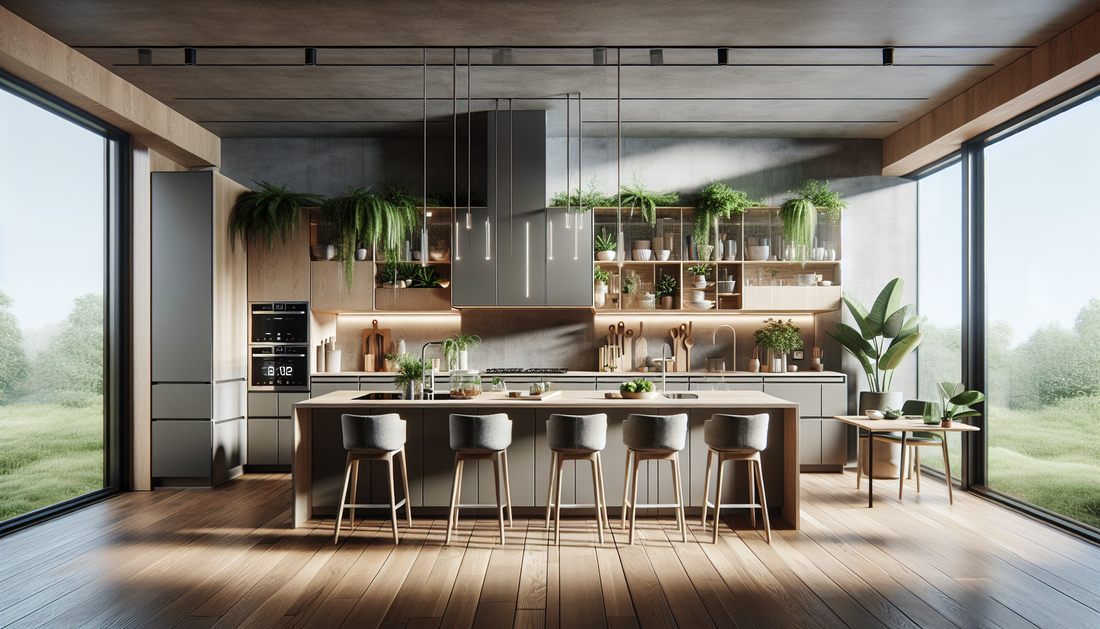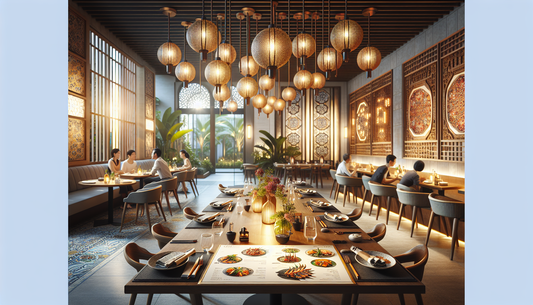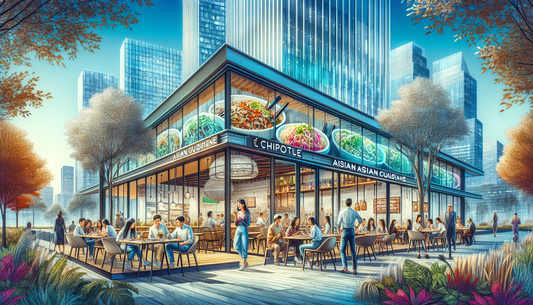
Transformative Kitchen Design Trends for Singaporean Homes in 2025
KitchenBetaRunner KitchenShare
Transformative kitchen design trends are reshaping Singaporean homes as we approach 2025, blending style, technology, and sustainability. Here's what's expected to dominate the market:
- Smart Kitchens: High-tech solutions are becoming commonplace, featuring appliances you can control with your smartphone or voice assistant. Expect to see more AI-driven gadgets making kitchen tasks simpler and smarter. 🤖
- Sustainable Materials: Eco-friendly choices will be at the forefront, with recycled and sustainable materials becoming standard in countertops, cabinets, and floors. 🌿
- Compact Design: With limited space in many Singaporean homes, innovations in compact and efficient kitchen layouts will maximize functionality. Modular designs and clever storage solutions are key trends to watch. 🏡
- Biophilic Elements: Bringing a touch of nature indoors, kitchens will incorporate more greenery, from herb gardens to living walls, promoting a sense of well-being. 🌱
- Color and Texture: Bold colors and varied textures will add personality to kitchens, breaking away from neutral palettes. Expect a splash of vibrancy that reflects individual tastes. 🎨
As we step into the dynamic world of kitchen design, the trends for 2025 are more eclectic and innovative than ever. With an emphasis on personalization and sustainability, these trends are set to redefine our culinary spaces. The heart of the home is transforming into a multifunctional area that caters to the modern lifestyle. Singapore, a city renowned for its architectural innovation, is no stranger to these evolving styles. With its people embracing global influences, Singapore’s kitchens are being reshaped not just in aesthetics but also in their functional ethos.
One of the standout trends is the integration of smart technology into kitchen designs. From automated cooking appliances to intelligent lighting systems, the concept of a "smart kitchen" is gaining ground. This trend isn’t just about convenience, but also energy efficiency and enhancing the user experience. Hearing from local designers, it's clear that the adoption of smart technology in kitchens is part of Singapore’s broader move towards sustainable living. As homes become more connected, kitchens evolve into an epicenter of tech innovation.
Another trend making waves is the use of sustainable and natural materials. This aligns with Singapore’s green building initiatives, which encourage the use of eco-friendly materials. Bamboo, reclaimed wood, and recycled metal are increasingly popular, giving kitchens a warm, natural feel while promoting environmental responsibility. It's a shift from synthetic materials, aligning with the global move towards sustainability.
{{ Picket & Rail Ad }}
Global influences are prompting a rise in bold color palettes and artistic designs. Thoughtfully integrated patterns and textures provide depth and character to kitchen interiors, moving away from traditional monochrome themes. In multicultural hubs like Singapore, these influences blend effortlessly, bringing about a vibrant yet harmonious design aesthetic. Designers are experimenting with dramatic hues like emerald greens and deep blues, adding a fresh perspective to the neutral tones that once dominated the scene.
Personalization Takes Center Stage
Perhaps the most notable trend is personalization. Homeowners are seeking ways to infuse personal touches into their kitchen spaces. This trend is about more than just picking colors; it involves custom cabinetry, unique fixtures, and bespoke design elements tailored to individual preferences. In Singapore, this personalized approach is reflected in the growing market for custom kitchen solutions offered by local designers and companies like Picket&Rail, who are at the forefront of creating kitchens that reflect individual styles.
The Rise of Multifunctional Kitchen Spaces
The kitchen is no longer just a place to cook; it has become an integral part of living spaces. Multifunctional kitchens that combine dining, work, and leisure areas in one cohesive space are becoming increasingly popular. Open-plan designs help promote this seamless integration, allowing families to spend more time together in shared spaces. In urban settings such as Singapore, where space is often at a premium, these multifunctional designs provide practical and aesthetically pleasing solutions.
Hybrid and Flexible Design Concepts
Design flexibility is key in 2025 kitchen trends, with hybrid spaces that can adapt to changing needs. Modular furniture and mobile islands are examples of how kitchens can be both versatile and stylish. This adaptability is essential for smaller spaces common in urban areas like Singapore, allowing homeowners to transform their kitchens easily from cooking areas to social hubs. Whether it's through moving partitions or flexible storage, the modern kitchen is becoming more resourceful and innovative.
Lighting also plays a crucial role in this transition, with layered lighting schemes that allow for different moods and uses. Integrated LED lighting solutions not only enhance the aesthetics but also improve functionality, further cementing the kitchen’s role as a versatile space.
Technological Innovations Enhancing Kitchen Efficiency
Smart technology isn't just about connectivity; it's about efficiency and enhanced cooking experiences. Voice-activated assistants and smart refrigerators that suggest recipes based on available ingredients are just a few of the innovations making cooking a seamless experience. In Singaporean homes, these technologies are becoming commonplace as more homeowners recognize their value in saving time and reducing waste.
The incorporation of smart appliances that monitor energy usage marks a significant shift towards sustainable living. Energy-efficient dishwashers, induction cooktops, and eco-friendly refrigerators not only reduce carbon footprints but also align with Singapore's sustainable development goals.
With home automation technology advancing rapidly, the smart kitchen trend is set to dominate the design landscape, providing both functionality and an enhanced culinary experience in one fell swoop.
A Return to Nature
Biophilic design principles are taking root in kitchen design, with more greenery and natural light emphasized in layouts. This connection to nature is reflected in indoor herb gardens and extensive window designs that flood spaces with daylight. The trend caters to a growing desire for healthier living environments, which is particularly pertinent in densely populated cities like Singapore.
The introduction of indoor planters and vertical gardens in kitchens not only improves aesthetics but also contributes to cleaner indoor air. This natural touch is further amplified through the use of earthy tones and natural textures, bringing an organic feel to contemporary kitchen spaces.
Bold and Artistic Design Statements
The trend for 2025 also includes making bold design statements through innovative use of materials and unusual color schemes. In Singapore, where cultural diversity is rich, this manifests as eclectic kitchens that reflect global cultures and the melting pot of influences that define the city. Artistic tiles, statement-making backsplashes, and contrasting materials are used to create visually striking kitchen environments.
By incorporating elements like these, homeowners can craft spaces that are not just functional but also reflective of their unique identities. These artistic touches transform kitchen environments into dynamic areas of the home, filled with personality and style.
As we navigate through 2023 and beyond, it’s clear that kitchen design trends are poised to be more diverse and personal than ever. Singaporeans, in particular, are embracing these global trends, adapting them to their unique lifestyle needs and preferences. The fusion of personal taste, smart technology, and sustainability will guide the future of kitchen design, setting new benchmarks for efficiency and style.










